Apr 9, 2020
Apr 9, 2020
Apr 9, 2020
How a personality test for employment can help your hiring process
How a personality test for employment can help your hiring process
How a personality test for employment can help your hiring process


The Bryq Team
HR Experts
Bryq is composed of a diverse team of HR experts, including I-O psychologists, data scientists, and seasoned HR professionals, all united by a shared passion for soft skills.
Bryq is composed of a diverse team of HR experts, including I-O psychologists, data scientists, and seasoned HR professionals, all united by a shared passion for soft skills.




Recently, more and more recruiters are turning to pre-employment personality testing to help them decide on a candidate. Why? What is it? We cover these questions and more – keep reading to find out.
What is a Personality Test?
Personality tests are designed to find out more about job candidates as part of the hiring process. They come in many forms and are often filled out online on a computer. They may be questionnaires, interviews or other types of formats. The answers to the personality test provide a description of the type of person a candidate is.
These tests are designed to uncover personality traits which may or may not make a person a good fit for a role. These personality assessments usually occur before the interview process begins. Many studies have been done on their efficacy, with varying results.
Why Would Recruiters Use a Personality Test for Employment?
To find out more about the candidate’s personality.
By using a personality inventory, hiring managers and recruiters can gain a better sense of who the candidate is as a person. Knowing about employee personalities assists in hiring decisions. They can more accurately consider whether the cultural fit is right.
To determine job fit.
Having the right job fit is crucial to a new employee’s success in any role. If an employee does not have the right personality traits for the role in question, chances are that both satisfaction and performance will be effected.
To predict job performance.
Many personality test results are said to be able to predict this. Putting people in the right role can contribute to lower turnover and higher productivity. This saves businesses money spent on replacing staff and lost time.
Which Personality Assessments are Commonly Used?
Myers-Briggs Type Indicator (MBTI)
This is one of the most popular personality profiles out there. People are using it all over the world to find out which of the Myers Briggs types they fit into.
It functions by sorting people into one of two personality types across 4 groups. These are
Extraversion vs Introversion
Intuition vs Sensing
Thinking vs Feeling
Judging vs Perceiving
The accuracy of this personality inventory has been debated for a long time. This is, among other reasons, due to its binary groupings. It creates a forced-choice situation between two options, and has been criticized of not providing results that are stable over time.
Hogan Personality Inventory (HPI)
HPI is another of the many aptitude tests that employers may use to evaluate potential employees. It has been around since the 80s and has been used by more than 500,000 job candidates.
It uses a five-factor model to assess people. It comes in the form of true or false questions and covers many facets of your personality. It features 6 occupational scales:
Service Orientation
Stress Tolerance
Reliability
Clerical Potential
Sales Potential
Managerial Potential
It gives an indication of your interview style as well as how you may react in certain situations.
The Hogan assessment can be costly and requires interpretation so recruiters tend to use it on short-listed candidates or for C-level executive roles. The risk of using assessments this way is missing out on talent that would be a good fit for the role but for some reason or another did not pass the resume screening phase.
DiSC
DiSC is another model used regularly for personality assessments. DiSC stands for Dominance, Influence, Steadiness and Conscientiousness. Usually, each person would land more in one of these four categories than the rest.
You'll receive a suggestion for which category most closely aligns with your personality and read about the associated traits.
For example, the Dominance trait is associated with being direct and forceful. It is also strong-willed and results-oriented. The Influence trait is known for its energy, optimism, enthusiasm and being social. Those in the Steady category and said to be courteous, tactful, supportive and patient. Finally, people who identify as Conscientious are meant to be fact-focused and logical. They are also reserved and analytical.
While the DiSC assessment is widely used and considered more reliable than Myers-Briggs it has not been adequately studied to prove its accuracy versus actual job performance. In addition, its results can be lengthy and, might therefore require special training in order to interpret them appropriately making it difficult to use.
Sixteen Personality Factor Questionnaire (16PF)
Raymond B. Cattell , Maurice Tatsuoka and Herbert Eber have the developed the Sixteen Personality Factor Questionnaire (16PF) after decades of research. Cattell found that human personality can be modeled and explained using sixteen variables that are based on personality traits. The model is based on statistics and using the factor analysis procedure.The 16 personality dimensions are:
Abstractedness: Imaginative versus practical
Apprehension: Worried versus confident
Dominance: Forceful versus submissive
Emotional Stability: Calm versus high-strung
Liveliness: Spontaneous versus restrained
Openness to Change: Flexible versus attached to the familiar
Perfectionism: Controlled versus undisciplined
Privateness: Discreet versus open
Reasoning: Abstract versus concrete
Rule-Consciousness: Conforming versus non-conforming
Self-Reliance: Self-sufficient versus dependent
Sensitivity: Tender-hearted versus tough-minded
Social Boldness: Uninhibited versus shy
Tension: Inpatient versus relaxed
Vigilance: Suspicious versus trusting
Warmth: Outgoing versus reserved
The 16PF model is used in recruitment as a candidate selection technique and has demonstrated high predictive validity in studies. By using this personality test for employment, HR can obtain a comprehensive assessment of a candidates personality and link the results to work performance and behavior. Allowing HR to understand how the candidate will behave in normal working conditions.
Recently, more and more recruiters are turning to pre-employment personality testing to help them decide on a candidate. Why? What is it? We cover these questions and more – keep reading to find out.
What is a Personality Test?
Personality tests are designed to find out more about job candidates as part of the hiring process. They come in many forms and are often filled out online on a computer. They may be questionnaires, interviews or other types of formats. The answers to the personality test provide a description of the type of person a candidate is.
These tests are designed to uncover personality traits which may or may not make a person a good fit for a role. These personality assessments usually occur before the interview process begins. Many studies have been done on their efficacy, with varying results.
Why Would Recruiters Use a Personality Test for Employment?
To find out more about the candidate’s personality.
By using a personality inventory, hiring managers and recruiters can gain a better sense of who the candidate is as a person. Knowing about employee personalities assists in hiring decisions. They can more accurately consider whether the cultural fit is right.
To determine job fit.
Having the right job fit is crucial to a new employee’s success in any role. If an employee does not have the right personality traits for the role in question, chances are that both satisfaction and performance will be effected.
To predict job performance.
Many personality test results are said to be able to predict this. Putting people in the right role can contribute to lower turnover and higher productivity. This saves businesses money spent on replacing staff and lost time.
Which Personality Assessments are Commonly Used?
Myers-Briggs Type Indicator (MBTI)
This is one of the most popular personality profiles out there. People are using it all over the world to find out which of the Myers Briggs types they fit into.
It functions by sorting people into one of two personality types across 4 groups. These are
Extraversion vs Introversion
Intuition vs Sensing
Thinking vs Feeling
Judging vs Perceiving
The accuracy of this personality inventory has been debated for a long time. This is, among other reasons, due to its binary groupings. It creates a forced-choice situation between two options, and has been criticized of not providing results that are stable over time.
Hogan Personality Inventory (HPI)
HPI is another of the many aptitude tests that employers may use to evaluate potential employees. It has been around since the 80s and has been used by more than 500,000 job candidates.
It uses a five-factor model to assess people. It comes in the form of true or false questions and covers many facets of your personality. It features 6 occupational scales:
Service Orientation
Stress Tolerance
Reliability
Clerical Potential
Sales Potential
Managerial Potential
It gives an indication of your interview style as well as how you may react in certain situations.
The Hogan assessment can be costly and requires interpretation so recruiters tend to use it on short-listed candidates or for C-level executive roles. The risk of using assessments this way is missing out on talent that would be a good fit for the role but for some reason or another did not pass the resume screening phase.
DiSC
DiSC is another model used regularly for personality assessments. DiSC stands for Dominance, Influence, Steadiness and Conscientiousness. Usually, each person would land more in one of these four categories than the rest.
You'll receive a suggestion for which category most closely aligns with your personality and read about the associated traits.
For example, the Dominance trait is associated with being direct and forceful. It is also strong-willed and results-oriented. The Influence trait is known for its energy, optimism, enthusiasm and being social. Those in the Steady category and said to be courteous, tactful, supportive and patient. Finally, people who identify as Conscientious are meant to be fact-focused and logical. They are also reserved and analytical.
While the DiSC assessment is widely used and considered more reliable than Myers-Briggs it has not been adequately studied to prove its accuracy versus actual job performance. In addition, its results can be lengthy and, might therefore require special training in order to interpret them appropriately making it difficult to use.
Sixteen Personality Factor Questionnaire (16PF)
Raymond B. Cattell , Maurice Tatsuoka and Herbert Eber have the developed the Sixteen Personality Factor Questionnaire (16PF) after decades of research. Cattell found that human personality can be modeled and explained using sixteen variables that are based on personality traits. The model is based on statistics and using the factor analysis procedure.The 16 personality dimensions are:
Abstractedness: Imaginative versus practical
Apprehension: Worried versus confident
Dominance: Forceful versus submissive
Emotional Stability: Calm versus high-strung
Liveliness: Spontaneous versus restrained
Openness to Change: Flexible versus attached to the familiar
Perfectionism: Controlled versus undisciplined
Privateness: Discreet versus open
Reasoning: Abstract versus concrete
Rule-Consciousness: Conforming versus non-conforming
Self-Reliance: Self-sufficient versus dependent
Sensitivity: Tender-hearted versus tough-minded
Social Boldness: Uninhibited versus shy
Tension: Inpatient versus relaxed
Vigilance: Suspicious versus trusting
Warmth: Outgoing versus reserved
The 16PF model is used in recruitment as a candidate selection technique and has demonstrated high predictive validity in studies. By using this personality test for employment, HR can obtain a comprehensive assessment of a candidates personality and link the results to work performance and behavior. Allowing HR to understand how the candidate will behave in normal working conditions.
Recently, more and more recruiters are turning to pre-employment personality testing to help them decide on a candidate. Why? What is it? We cover these questions and more – keep reading to find out.
What is a Personality Test?
Personality tests are designed to find out more about job candidates as part of the hiring process. They come in many forms and are often filled out online on a computer. They may be questionnaires, interviews or other types of formats. The answers to the personality test provide a description of the type of person a candidate is.
These tests are designed to uncover personality traits which may or may not make a person a good fit for a role. These personality assessments usually occur before the interview process begins. Many studies have been done on their efficacy, with varying results.
Why Would Recruiters Use a Personality Test for Employment?
To find out more about the candidate’s personality.
By using a personality inventory, hiring managers and recruiters can gain a better sense of who the candidate is as a person. Knowing about employee personalities assists in hiring decisions. They can more accurately consider whether the cultural fit is right.
To determine job fit.
Having the right job fit is crucial to a new employee’s success in any role. If an employee does not have the right personality traits for the role in question, chances are that both satisfaction and performance will be effected.
To predict job performance.
Many personality test results are said to be able to predict this. Putting people in the right role can contribute to lower turnover and higher productivity. This saves businesses money spent on replacing staff and lost time.
Which Personality Assessments are Commonly Used?
Myers-Briggs Type Indicator (MBTI)
This is one of the most popular personality profiles out there. People are using it all over the world to find out which of the Myers Briggs types they fit into.
It functions by sorting people into one of two personality types across 4 groups. These are
Extraversion vs Introversion
Intuition vs Sensing
Thinking vs Feeling
Judging vs Perceiving
The accuracy of this personality inventory has been debated for a long time. This is, among other reasons, due to its binary groupings. It creates a forced-choice situation between two options, and has been criticized of not providing results that are stable over time.
Hogan Personality Inventory (HPI)
HPI is another of the many aptitude tests that employers may use to evaluate potential employees. It has been around since the 80s and has been used by more than 500,000 job candidates.
It uses a five-factor model to assess people. It comes in the form of true or false questions and covers many facets of your personality. It features 6 occupational scales:
Service Orientation
Stress Tolerance
Reliability
Clerical Potential
Sales Potential
Managerial Potential
It gives an indication of your interview style as well as how you may react in certain situations.
The Hogan assessment can be costly and requires interpretation so recruiters tend to use it on short-listed candidates or for C-level executive roles. The risk of using assessments this way is missing out on talent that would be a good fit for the role but for some reason or another did not pass the resume screening phase.
DiSC
DiSC is another model used regularly for personality assessments. DiSC stands for Dominance, Influence, Steadiness and Conscientiousness. Usually, each person would land more in one of these four categories than the rest.
You'll receive a suggestion for which category most closely aligns with your personality and read about the associated traits.
For example, the Dominance trait is associated with being direct and forceful. It is also strong-willed and results-oriented. The Influence trait is known for its energy, optimism, enthusiasm and being social. Those in the Steady category and said to be courteous, tactful, supportive and patient. Finally, people who identify as Conscientious are meant to be fact-focused and logical. They are also reserved and analytical.
While the DiSC assessment is widely used and considered more reliable than Myers-Briggs it has not been adequately studied to prove its accuracy versus actual job performance. In addition, its results can be lengthy and, might therefore require special training in order to interpret them appropriately making it difficult to use.
Sixteen Personality Factor Questionnaire (16PF)
Raymond B. Cattell , Maurice Tatsuoka and Herbert Eber have the developed the Sixteen Personality Factor Questionnaire (16PF) after decades of research. Cattell found that human personality can be modeled and explained using sixteen variables that are based on personality traits. The model is based on statistics and using the factor analysis procedure.The 16 personality dimensions are:
Abstractedness: Imaginative versus practical
Apprehension: Worried versus confident
Dominance: Forceful versus submissive
Emotional Stability: Calm versus high-strung
Liveliness: Spontaneous versus restrained
Openness to Change: Flexible versus attached to the familiar
Perfectionism: Controlled versus undisciplined
Privateness: Discreet versus open
Reasoning: Abstract versus concrete
Rule-Consciousness: Conforming versus non-conforming
Self-Reliance: Self-sufficient versus dependent
Sensitivity: Tender-hearted versus tough-minded
Social Boldness: Uninhibited versus shy
Tension: Inpatient versus relaxed
Vigilance: Suspicious versus trusting
Warmth: Outgoing versus reserved
The 16PF model is used in recruitment as a candidate selection technique and has demonstrated high predictive validity in studies. By using this personality test for employment, HR can obtain a comprehensive assessment of a candidates personality and link the results to work performance and behavior. Allowing HR to understand how the candidate will behave in normal working conditions.
Related blog posts
Related blog posts



Gain a competitive edge with data-informed talent decisions.
Request a demo and see how our platform is Shaping the Future of Work.



Gain a competitive edge with data-informed talent decisions.
Request a demo and see how our platform is Shaping the Future of Work.

Gain a competitive edge with data-informed talent decisions.
Request a demo and see how our platform is Shaping the Future of Work.


